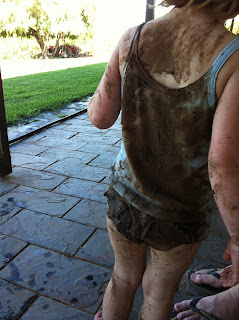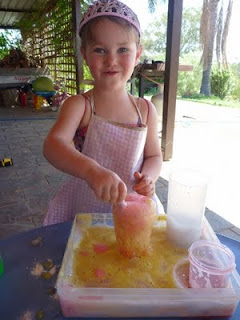A few weeks ago I saw a pin from another blog that made me say 'Wow' out loud. I know, right? It was an idea so simple, I'm not sure why I hadn't thought of it before.
I'm always looking for different sensory materials for play. Ones that can be kept and reused easily, ones that don't always use food, ones that can be cleaned up easily.
We've tried lots of different mediums....
There's been all the obvious ones - plenty of sand, water
and, of course, mud
and even more mud :)
There's been paint
shaving cream paint,
shaving cream with ice,
snow in summer,
cloud dough (lovely stuff but don't add water unless you're done with it),
playdough play,
plenty of rice (sometimes plain, sometimes rainbow coloured),
pulses and seeds in the kitchen,
reactions and smells,
paper - plain,
and sticky.
We've played with goop, water beads (oh soooo bouncy), cornflour and shaving cream, glass beads, salt, moon sand, bubble wrap, paint on foil, the list goes on.
But it's winter time here and something that doesn't get everyone soaked but will get them outside for awhile is perfect. This was their newest invitation to play -
A big bag of wild bird seed - perfect for winter play. For mixing, measuring, pouring, for running through your fingers and then sweeping up for the birds.
I liked this pin too but might need longer to collect enough beads!
It's from a fantastic site full of sensory tub ideas for play. Visit rubber boots and elf shoes to see more.
And if you're not sure why sensory play is important, read this great post by Not Just Cute.
If you are looking for other sensory play ideas, visit my Pinterest board - Sensory Play
What other sensory materials have you used at home or in a classroom with great success?























